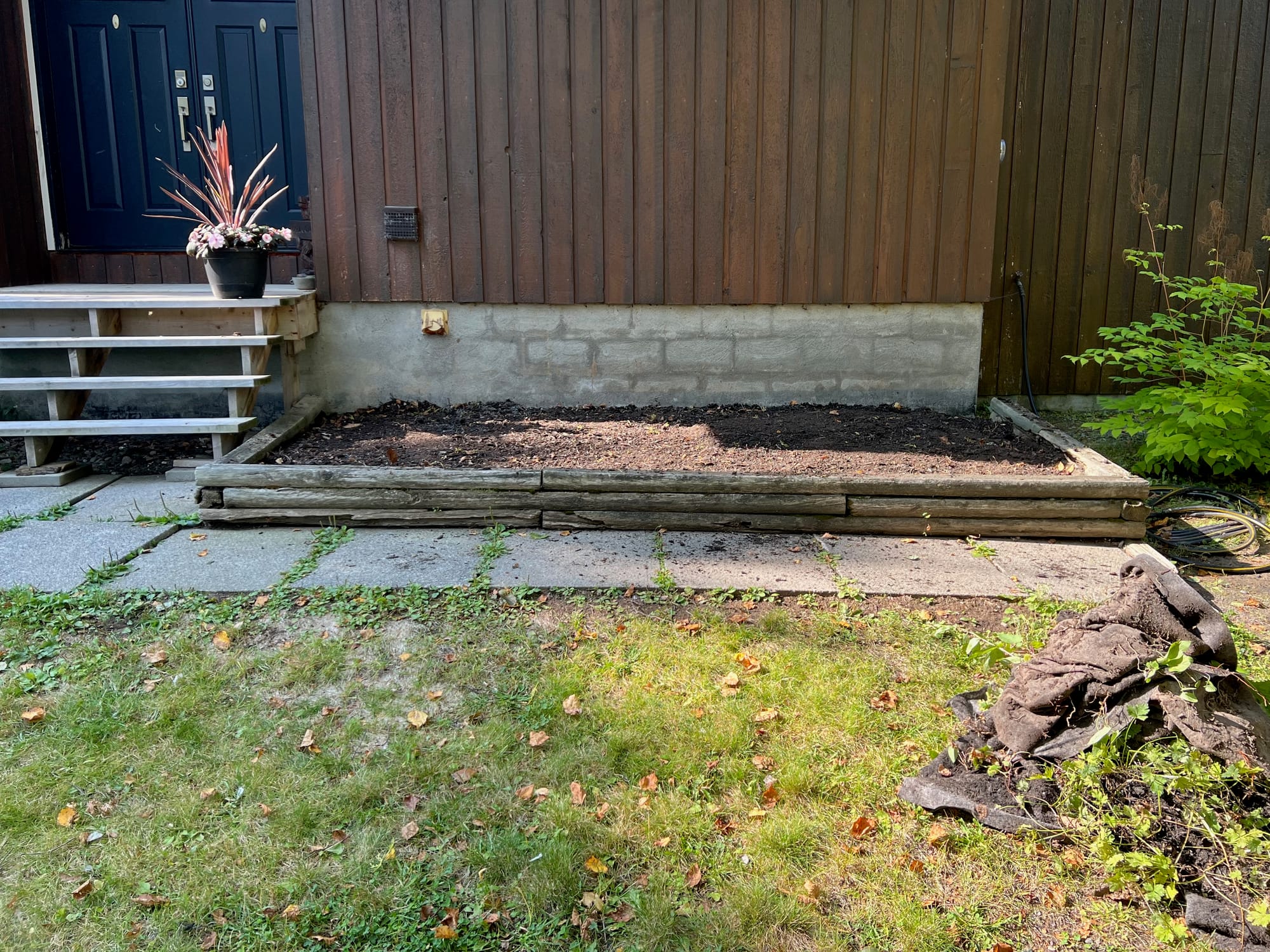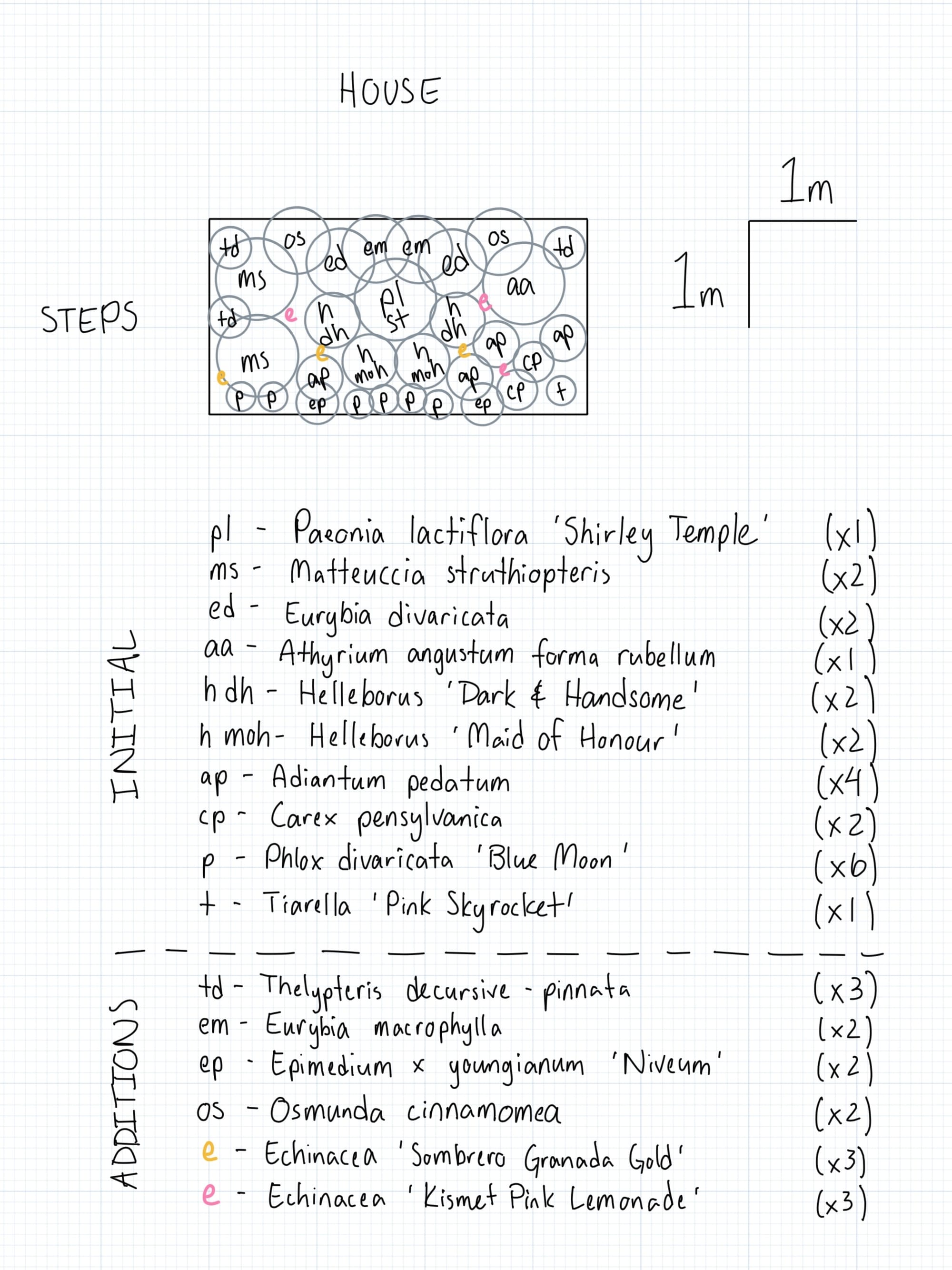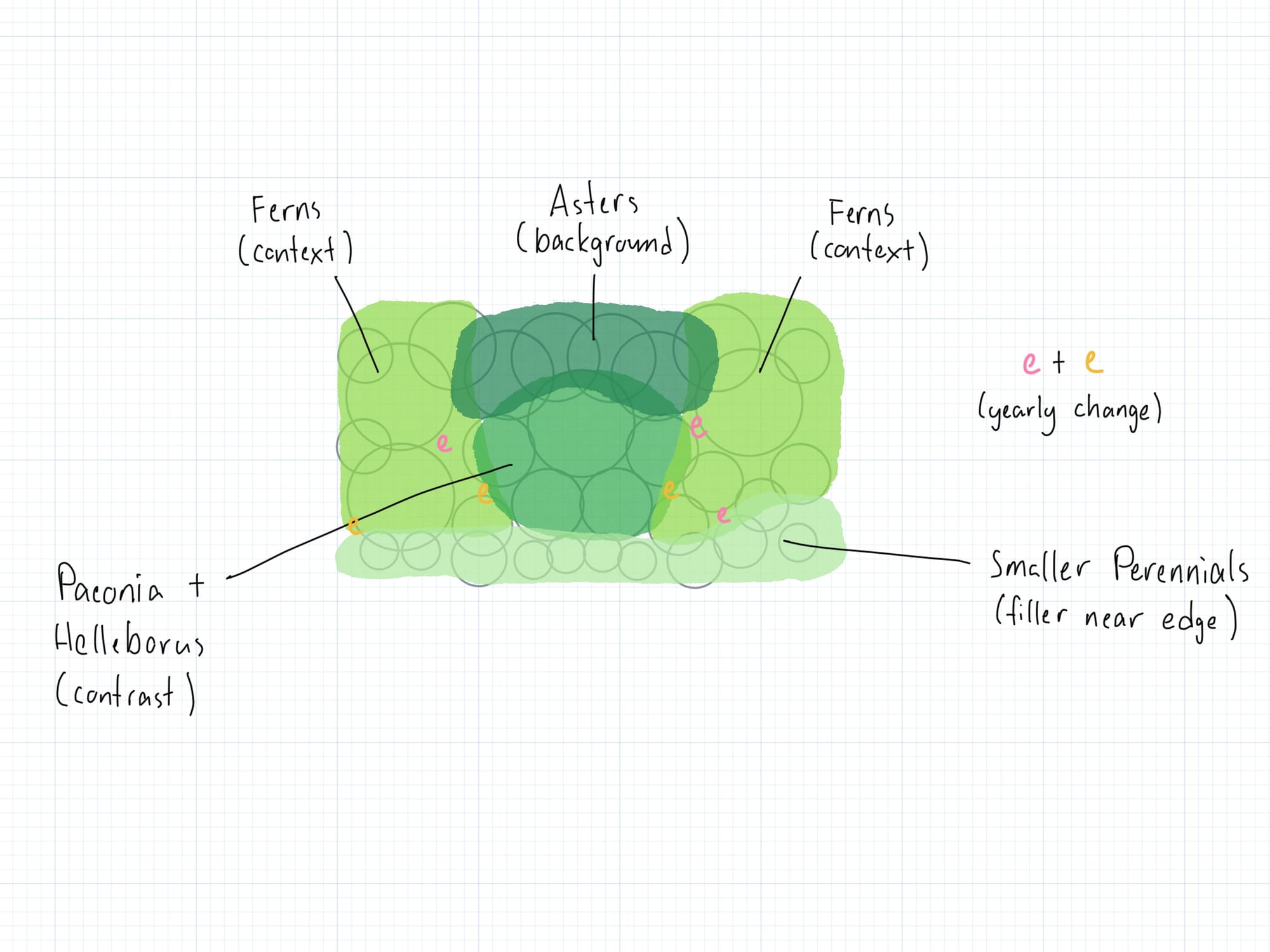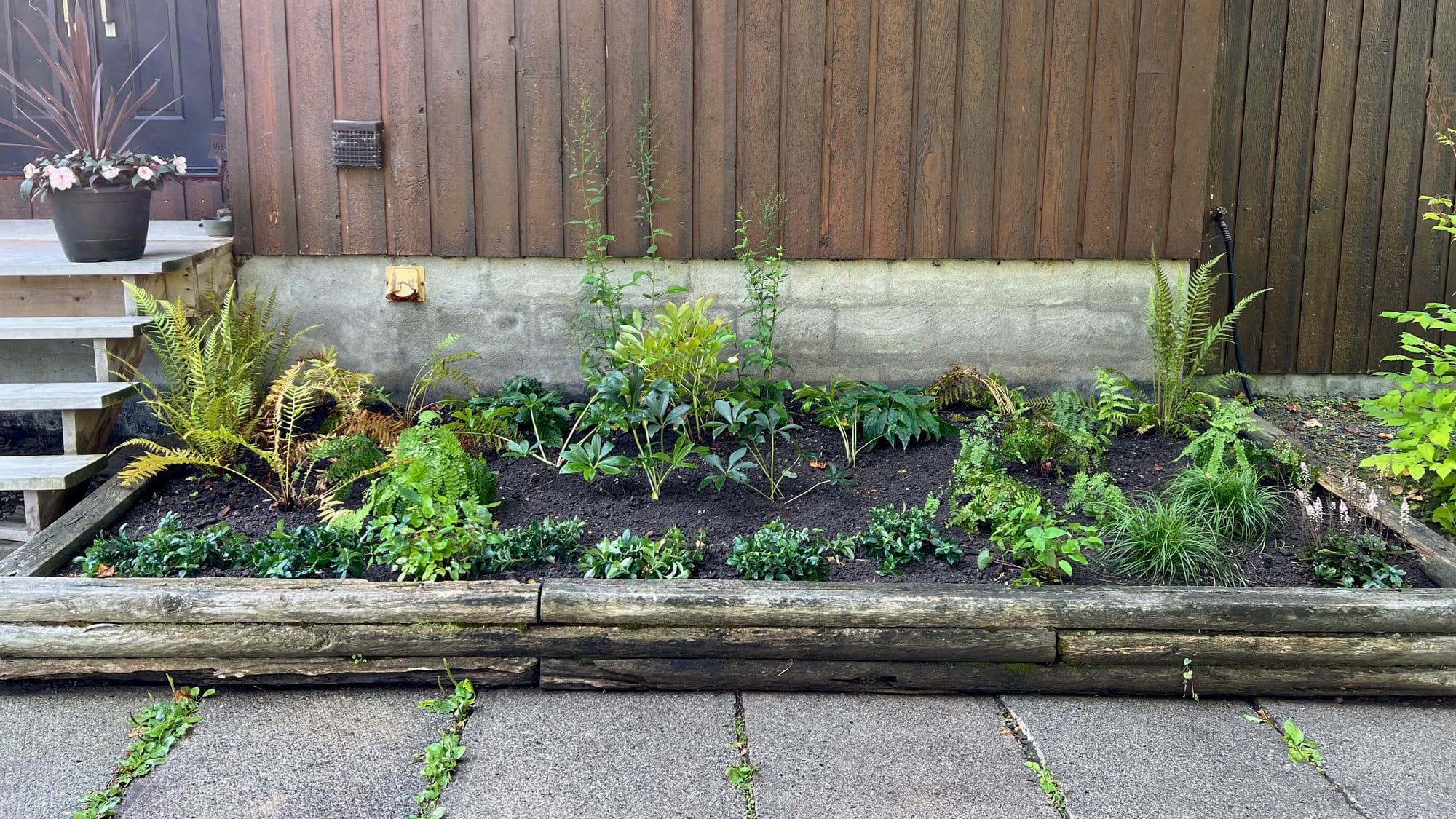A promise yet to be fulfilled [07/25]
![A promise yet to be fulfilled [07/25]](/content/images/size/w1200/2025/09/IMG_9325.0aeea3845d3e41e78052ada61e9d08f9.jpeg)
I’m Nathan Langley and this is A promise yet to be fulfilled, a seasonal weekly newsletter on my garden developments at home in Sudbury, Ontario!
I’m behind on my writing. Surprise, surprise.
A few weeks ago, I ripped up the garden bed immediately next to the front door of the house. A previous owner had planted an uninspired combination of three upright cedars and four golden false cypress. This particular spot of the house is north facing and slightly under the canopy of a birch tree. It might get, at most, four hours of early morning sunlight during the day.
The Chamaecyparis eventually did ok after a few tough years. The cedars, however, struggled to do anything. One died three or so years ago, while the other ones became bare on the house side of their canopy (which you would expect with the lack of sunlight).
The bed was also covered in landscape fabric and black mulch. Naturally, both eventually failed as the mulch broke down and the landscape fabric was punctured by various germinating weed underneath and Ranunculus repens on top.

So I transplanted all the woodies elsewhere in the yard, ripped out the landscape fabric / remaining mulch, and did a quick weed / levelling of the soil. It was time for something new.

I initially planted like I would for a client — everything had its space and there wasn’t much overlapping. After planting, however, I snapped out of this mode. I had lots of shade tolerant perennials on site that aren’t usually seen in Sudbury, and I wanted to see what they could do. Why not take off the guard rails for a change and have some fun?
So I took my initial planting and let loose. By the time I was done, I had planted 38 perennials in this 3.5 x 2m bed. The rough planting plan above looks a little chaotic, but there is still a method to the madness.
One of the things I have been experimenting with in my designs is increasing interest in small spaces without making it overwhelming for visitors who aren’t gardeners. To achieve this, I often incorporate different species or cultivars of plants into the same space. More typically, I find people resist doing this. They already have a particular plant, so they want something different. I think this is a trap.
Gardening, at its core, is a visual medium. Stripped away of everything else (scent, pollinators, native plants, blah blah blah) you spend the majority of your time enjoying a garden by looking at it. Add too much and your brain doesn’t know what to focus on and it becomes overwhelmed. Things look unkempt and lacking those all important cues to care.
For me, it all comes down to visual noise. Think about the movie Blade Runner. The opening that showcases what the city in the future is like is a great example of visual noise. It’s uncomfortable, and causes tension. Gardens should be the opposite of that. I don’t need more visual noise in my life — I need less.
I love rhythm. Symmetric or asymmetric structures don’t really matter to me as long as there is a strong underlying rhythm to a garden or specific viewpoint that can be immediately read and understood. It is what leads your eye and ‘walks’ you through the space. Your brain seeks it out, whether you realize it or not.
Once you have gone through that initial introduction to the rhythm of a space, your eye slows down and begins to notice subtle differences. Like those between plant species or cultivars. Or maybe it doesn’t! Either way, you aren’t initially overwhelmed with visual inputs. Your body can relax.

For this small garden, you can strip everything back to the image above. There are two framing clumps of ferns, a backdrop of perennials that get tall but don’t flower until fall, a centre clump that provides contrast through structure and leaf texture, and finally smaller filler plants along the front edge of the bed that borders the main pathway to the front door.
The cherry on top of this layout is the use of two perennials (the coloured e’s) that will be allowed to seed themselves freely throughout the bed. This will add a controlled pinch of chaos to the space, as it will be slightly different year to year. This is a trick I use (when appropriate) to add a dynamic feeling to a garden. It’s the same, but slightly different.

By spring next year, I expect this space to be dense and full. I want that. I have no interest in spending my time weeding an empty garden of mulch. I know it doesn’t look like much right now. That is always the hard part of documenting a new garden immediately after planting. It doesn’t look great. That will change.
n